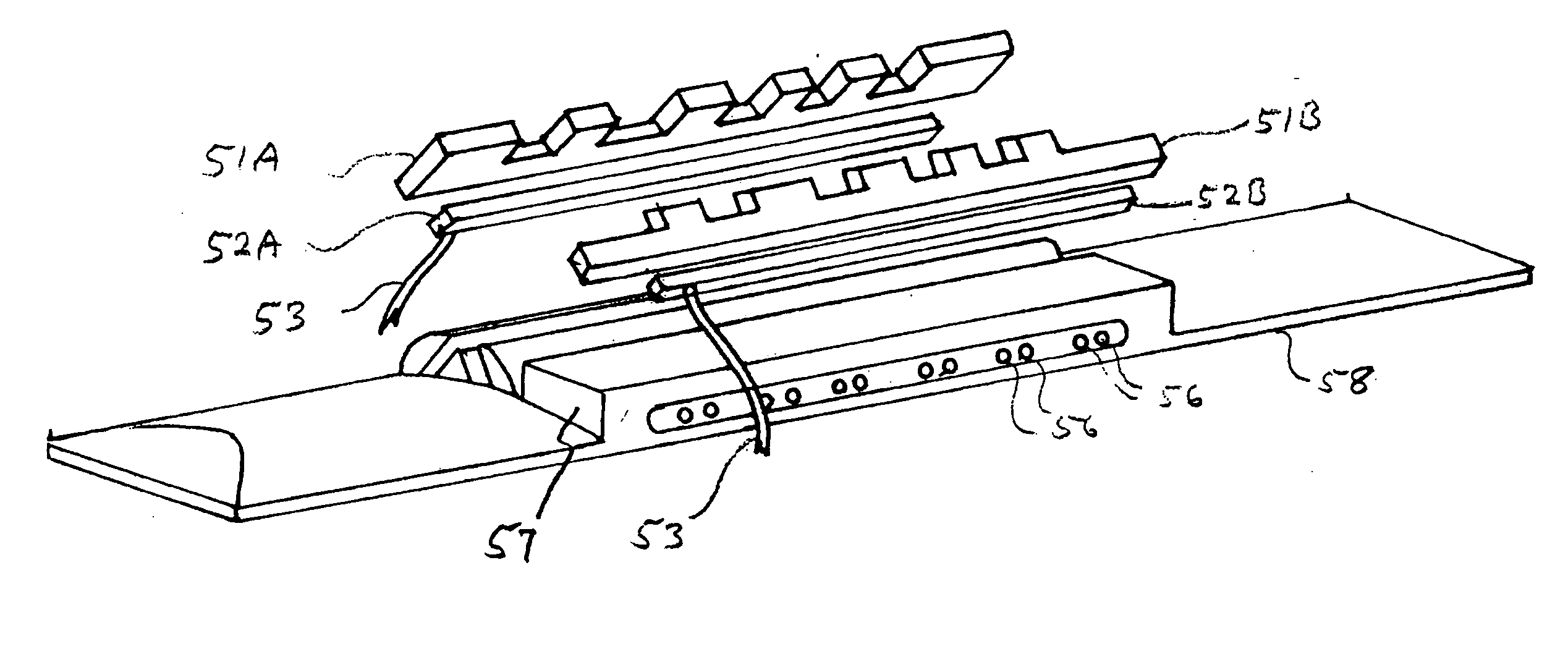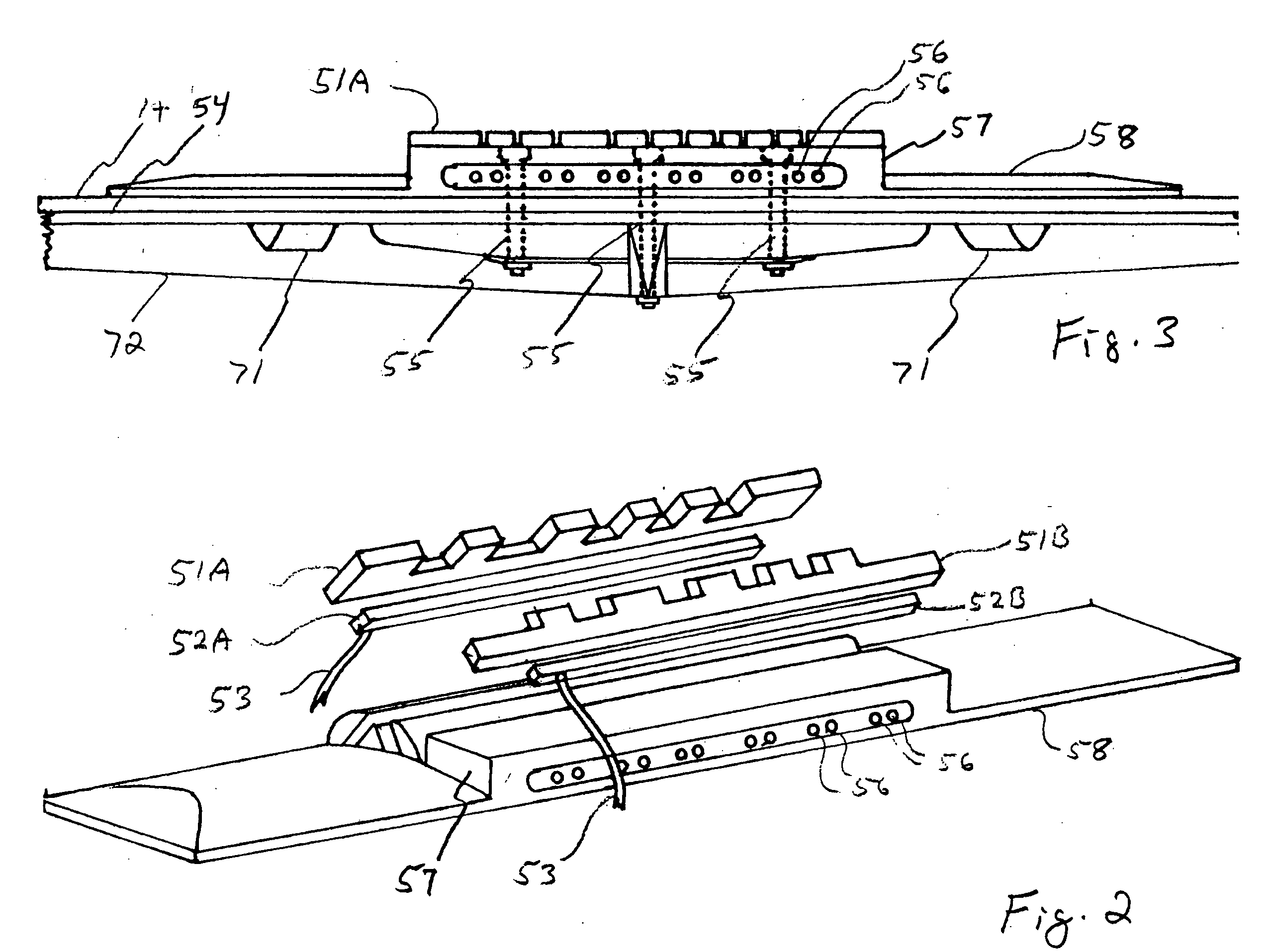Dual saddle bridge
a saddle bridge and saddle technology, applied in stringed musical instruments, instruments, electrophonic musical instruments, etc., can solve problems such as difficulty in adjusting the strings, so as to achieve the effect of ensuring the sound without compromising the sound
- Summary
- Abstract
- Description
- Claims
- Application Information
AI Technical Summary
Benefits of technology
Problems solved by technology
Method used
Image
Examples
Embodiment Construction
[0023] In FIG. 1 a guitar 5 generally includes a headstock 10 with machine heads 12, top 14, sides 15, back 16, strings 20A-L (from left to right), a neck 30 with frets 32, a neck joint 34, a body 40, sound hole 42, and a bridge 50, and electronic controls 80.
[0024] Although guitar 10 is shown here as a classical acoustic guitar, it should also be interpreted as being indicative of a generic, fretted, stringed instrument, including for example a solid body steel guitar, or a lute. The headstock 10, machine heads 12, neck 30, and neck joint 34 are depicted in preferred embodiments, but are intended to be non-specific, and thereby include any components that could be reasonably substituted. Similarly, the body 40 is shown with a preferred size and shape, but is meant to include all reasonable sizes and shapes. Thus, the body 40 may or may not have sound hole 42, and may indeed have multiple sound holes (not shown). These various structural components are advantageously made from wood...
PUM
 Login to View More
Login to View More Abstract
Description
Claims
Application Information
 Login to View More
Login to View More - R&D
- Intellectual Property
- Life Sciences
- Materials
- Tech Scout
- Unparalleled Data Quality
- Higher Quality Content
- 60% Fewer Hallucinations
Browse by: Latest US Patents, China's latest patents, Technical Efficacy Thesaurus, Application Domain, Technology Topic, Popular Technical Reports.
© 2025 PatSnap. All rights reserved.Legal|Privacy policy|Modern Slavery Act Transparency Statement|Sitemap|About US| Contact US: help@patsnap.com



